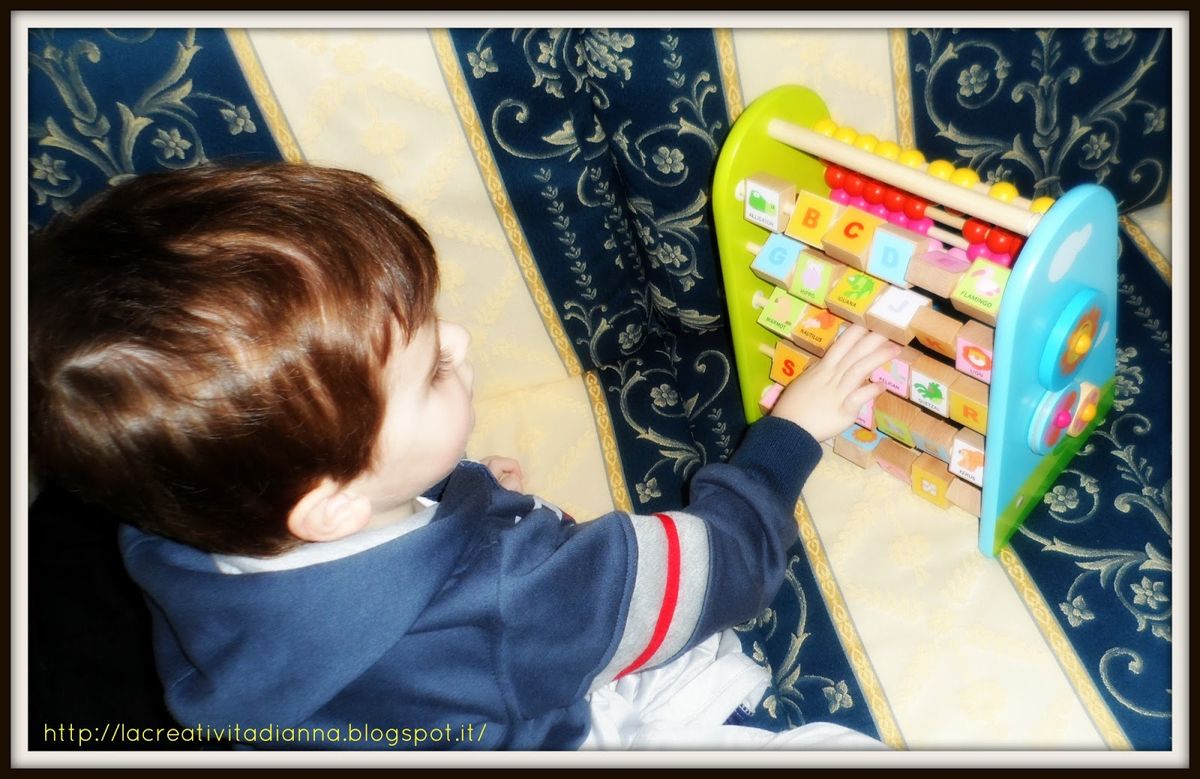
In the bustling rhythm of modern life, the quest for harmony at home can seem like a formidable challenge. The article ‘Harmony at Home: Achieving Balance and Family Wellness’ delves into practical strategies for creating a serene domestic environment, nurturing family bonds, and fostering personal well-being. By establishing work-life boundaries, prioritizing self-care, and cultivating a supportive family dynamic, individuals can navigate the complexities of contemporary living and achieve a healthier, more balanced lifestyle.
Key Takeaways
- Establishing clear work-life boundaries is crucial for mental health and family wellness, enabling individuals to recharge and prevent burnout.
- Quality time with family is more impactful than the quantity of time spent, emphasizing the importance of meaningful interactions and shared experiences.
- Integrating self-care into daily routines, including physical activity, mental health practices, and nutrition, is fundamental for personal and family wellness.
- Creating a harmonious household involves establishing routines, managing stress collectively, and ensuring that fun and recreation are part of family life.
- Balancing professional ambition with family commitments requires setting realistic goals, effective delegation, and maintaining intimacy and support within relationships.
Setting the Stage for Serenity: Establishing Work-Life Boundaries

Identifying Personal Limits
Understanding and identifying personal limits is crucial to maintaining a healthy work-life balance. It’s about recognizing the threshold of what you can handle in terms of work pressure and personal commitments before it starts to negatively impact your well-being.
- Establish specific working hours and adhere to them.
- Define clear personal time for leisure and self-care.
- Communicate these boundaries to colleagues and loved ones.
Setting clear boundaries is not just about time management; it’s about respecting your mental and physical health to prevent burnout.
Learning to say no and pushing back on broken boundaries are essential skills in preserving your personal limits. By doing so, you safeguard your health and ensure that you remain productive and capable of making sound decisions.
Communicating Boundaries Effectively
Effectively communicating your boundaries is crucial for maintaining work-life balance. Clearly articulate your limits and expectations, ensuring that everyone understands them. By being open and honest about your needs, you can avoid unnecessary stress and conflict.
- Openly discuss boundaries with your family.
- Let them know you can’t be disturbed during work hours unless it’s an emergency.
- Communicate when you’ll be available for family time.
It’s important to be consistent with your boundaries to foster respect and understanding. If unexpected challenges arise, address them promptly while adhering to your established boundaries as much as possible. Remember, effective communication is the key to harmony at home.
Respecting Your Own Rules
Once you’ve established your work-life boundaries, the next crucial step is to respect those boundaries yourself. This means being disciplined about your personal rules and understanding that they are in place for your well-being. Here are some ways to ensure you stay true to your commitments:
- Set clear boundaries between your work and personal life to prevent one from encroaching on the other.
- Be a person who is true to their word; follow through on your plans and commitments.
- Recognize the importance of self-care and prioritize it alongside your professional responsibilities.
It’s essential to be clear and consistent with your boundaries to maintain balance.
Unexpected challenges will arise, but how you handle them can either reinforce or weaken your boundaries. If you find yourself consistently breaking your own rules, take a moment to reassess and adjust them if necessary. Remember, boundaries are not just about saying no to others, but also about saying yes to yourself and your needs.
Fostering Fulfilling Relationships: Nurturing Family Connections

Quality Time vs. Quantity Time
In the pursuit of family wellness, the distinction between quality time and quantity time is crucial. While it’s easy to count the hours spent with loved ones, it’s the quality of those moments that truly fortifies relationships. Quality time means being fully present, engaging in meaningful conversations, and creating memories that last.
- Be fully engaged and present
- Listen actively and participate in conversations
- Avoid distractions that take away from the experience
Quality time is not measured by the clock but by the moments that take our breath away and the feelings of connection we foster.
To make the most of quality time, consider these steps:
- Plan activities that everyone enjoys.
- Create a distraction-free environment.
- Set aside regular intervals for family activities.
- Be flexible and open to spontaneous moments.
Remember, it’s not about the quantity of time we spend, but the depth and richness of the experiences we share.
The Role of Communication in Relationship Health
Effective communication is the cornerstone of healthy family relationships. It fosters understanding and empathy, allowing family members to share their thoughts, feelings, and needs in a supportive environment. Family Communication Is Important for Understanding Each Other. When we listen actively and speak honestly, we build a foundation of trust that is essential for any relationship to thrive.
Communication is not just about talking; it’s about connecting on a deeper level. Here are some key points to consider:
- Encouraging open dialogue without fear of judgment
- Practicing active listening to truly understand perspectives
- Expressing appreciation and affection regularly
The long-term benefits of healthy communication are immeasurable, impacting not only the family unit but also the individual.
Remember, nurturing healthy communication is a continuous process that requires patience and dedication. By prioritizing these practices, families can create a more harmonious and supportive home environment.
Creating Shared Family Goals
Creating shared family goals is a powerful way to unite a family with a common purpose and direction. Family goals are the best way to turn your family vision into reality and can significantly boost motivation and cohesion among family members. Here are some steps to help you get started:
- Hold a family meeting to discuss everyone’s aspirations and ideas.
- Identify common values and interests that align with the family’s vision.
- Set achievable goals that are specific, measurable, and time-bound.
- Assign roles and responsibilities to ensure everyone is involved.
- Regularly review and celebrate progress to maintain enthusiasm.
Establishing shared goals not only strengthens family bonds but also provides a sense of accomplishment as you achieve them together. It’s important to remember that these goals should be flexible and adaptable to the family’s changing dynamics and individual member’s growth.
By working towards shared objectives, families can foster a supportive environment where each member feels valued and understood. This collaborative effort can lead to a more harmonious and fulfilling family life.
The Pillars of Personal Wellness: Integrating Self-Care into Daily Life

The Importance of Physical Activity
Incorporating physical activity into our daily lives is not just beneficial; it’s a necessity for maintaining overall health and vitality. Regular exercise is crucial for all family members, from children developing their gross motor skills to adults seeking to improve work-life balance. Fitness should always be a priority in a family’s daily schedule, as emphasized by health organizations.
- Encourage activities that develop gross motor skills in children.
- Introduce family-friendly exercises that can be done together.
- Create a routine that includes physical activity for each family member.
Embracing an active lifestyle can lead to improved mental health, increased productivity, and a stronger family bond.
Remember, it is essential to move our bodies regularly, not just for our physical well-being but also for our mental and emotional health. Establishing a habit of regular exercise can be the cornerstone of a harmonious and healthy household.
Mental Health and Mindfulness Practices
In the pursuit of family wellness, mental health is a cornerstone that cannot be overlooked. Mindfulness practices offer a pathway to not only enhance our own well-being but also to foster a nurturing environment for our loved ones. Here are some steps to integrate mindfulness into your daily routine:
- Begin with short, daily meditation sessions.
- Practice mindful breathing when stress arises.
- Engage in regular self-reflection to understand your emotional landscape.
Mindfulness can lead you to a life settled in the present, where a non-judgmental acceptance of who you are fosters self-confidence and inner peace.
It’s important to recognize the negative internal dialogue that often undermines our mental state. By bringing attention to this inner conversation, mindfulness helps us turn around the negative self-talk and embrace a more positive outlook. Encourage each family member to find their own mindfulness practice that resonates with them, whether it’s through meditation, yoga, or simply spending time in nature. Remember, the goal is to create a harmonious atmosphere where each individual’s mental health is valued and nurtured.
The Impact of Nutrition on Well-being
The food we consume plays a pivotal role in our overall health, influencing not just our physical state but also our mental well-being. Good nutrition is foundational in the healthy development of both adults and children, providing essential nutrients that fuel the body and mind.
- Vitamins and minerals support cognitive functions and emotional balance.
- Fiber aids in digestion and can help maintain a healthy weight.
- Protein is crucial for muscle repair and growth.
- Probiotics promote a healthy gut, which is linked to improved mood and mental health.
Embracing a diet rich in whole foods, lean proteins, and nutrient-dense fruits and vegetables can lead to a more energized and balanced life. Current research demonstrates a link between dietary habits and mental wellness, suggesting that what we eat can affect how we feel emotionally and mentally.
By making informed choices about the foods we eat, we can support not only our physical health but also our mental clarity and emotional stability.
Cultivating a Harmonious Household: Strategies for Family Wellness

Establishing Healthy Routines
In the pursuit of family wellness, establishing healthy routines is a cornerstone. These routines act as the framework for a harmonious household, where each member knows what to expect and can rely on a structured environment.
-
Start by setting specific times for meals, ensuring that everyone sits down to eat slowly, without multitasking. This practice, often referred to as mindful eating, can significantly reduce stress and improve your relationship with food.
-
Regular physical activity should be incorporated into your daily routine. Whether it’s a morning walk or a family yoga session, staying active together strengthens both the body and the family bond.
-
Dedicate time each week to reflect and adjust these routines. Assess what’s working and what could be better aligned with your family’s goals and values. Be open to making changes as needed to maintain balance and wellness.
By prioritizing these practices, you create a healthier, happier life for your family and improve your overall family wellness. Remember, the goal is not to create a rigid schedule but to provide a flexible structure that supports the well-being of all family members.
Managing Stress as a Family
In the journey to cultivate a harmonious household, managing stress as a family is pivotal. Stress, while a natural part of life, can become overwhelming if not addressed. Here are a few strategies to keep stress at bay:
-
Foster open communication: Encourage each family member to express their feelings and concerns. This cultivates an environment of calm where everyone’s needs are heard, aiding in stress management.
-
Adopt a healthy lifestyle: Integrating physical activity, balanced nutrition, and adequate rest into your family’s routine can build resilience and make it easier to handle stress.
-
Organize your living space: A clutter-free home can reduce the feeling of chaos, promoting a more peaceful and stress-free environment.
Remember, the goal is not to eliminate stress completely but to develop effective coping mechanisms as a family unit.
By implementing these strategies, families can navigate stress together, ensuring that it doesn’t take over their lives but instead becomes a manageable aspect of their collective journey.
Incorporating Fun and Recreation
In the pursuit of a harmonious household, incorporating fun and recreation is essential. It’s not just about filling time; it’s about creating moments that energize and rejuvenate the family spirit. Here are some ways to weave recreation into your daily life:
-
Get active: Physical activity is a great way to incorporate more recreation into your life. Exercise not only improves your physical health, but it can also boost your mood and bring the family together. Consider activities that are enjoyable for all ages, such as a family dance-off or a backyard obstacle course.
-
Creative play: Set up imaginative play scenarios for younger children. Begin the course in a meadow adorned with colourful ribbons and fairy lights. Kids can start by hopping from one magic mushroom (soft cushions) to another, fostering a sense of wonder and excitement.
-
Shared hobbies: Find a hobby that the whole family can enjoy and learn together. Whether it’s gardening, cooking, or crafting, shared hobbies can create lasting memories and strengthen family bonds.
Embrace the spontaneous moments of joy that arise from playful interactions and shared laughter. These are the building blocks of a happy and connected family life.
Remember, the goal is to make recreation a natural and enjoyable part of your family’s routine, not another task on the to-do list. By doing so, you’ll cultivate a home environment where everyone can thrive.
Navigating High Achievement Without Sacrifice: Balancing Ambition with Family Life
Setting Realistic Goals and Expectations
Achieving harmony in family life while pursuing personal ambitions requires a delicate balance. Setting realistic goals is a cornerstone of this equilibrium. It’s about understanding your capabilities and limitations, and crafting aspirations that are attainable without overextending yourself.
- Reflect on your priorities and decide what’s truly important to you and your family.
- Establish clear, measurable objectives that align with your values and long-term vision.
- Be prepared to adjust your goals as circumstances change, ensuring they remain relevant and achievable.
Embrace the journey of continuous improvement, rather than fixating on perfection.
Remember, the pursuit of high achievement should not come at the cost of family wellness. By setting realistic goals, you increase accountability and allow for flexibility, which are essential for maintaining a healthy work-life balance.
The Art of Delegation and Prioritization
Mastering the art of delegation and prioritization is a cornerstone of maintaining a healthy work-life balance. Delegate tasks that others can handle to free up your time for the most critical activities. This not only lightens your load but also empowers others to contribute and grow.
Prioritize tasks by distinguishing between what is urgent and what is important. Focus on high-impact activities that align with your personal and professional goals. Here are some steps to help you delegate and prioritize effectively:
- Identify tasks that can be delegated and select the right people for them.
- Clearly communicate expectations and deadlines.
- Trust your team or family members to take ownership.
- Regularly review your priorities to adjust to any changes in your life or work.
Embrace flexibility in your approach and be willing to adjust your strategies as circumstances evolve. Remember, it’s about finding the balance that works for you and your family.
Maintaining Intimacy and Support in Relationships
In the pursuit of high achievement, it’s crucial to maintain the emotional connection with your partner and family. This requires intentional efforts to ensure that ambition does not overshadow the intimacy and support that are the bedrock of any strong relationship.
- Practice active listening and empathetic communication.
- Schedule regular ‘us time’ to nurture your relationship away from the demands of work.
- Celebrate each other’s successes and provide comfort during setbacks.
Embrace flexibility in your approach to family life, recognizing that unexpected events may require adjustments to your schedule.
Remember, maintaining a supportive environment at home is not just about being physically present; it’s about being emotionally available and responsive to the needs of your loved ones. By doing so, you create a foundation of trust and understanding that can withstand the pressures of a busy life.
CONCLUSION
In the intricate dance of life, harmony at home is the rhythm we strive to maintain. As we’ve explored throughout this article, achieving balance and family wellness is not a destination but a journey—one that requires clear boundaries, sustainable connections, and a holistic approach to our well-being. Whether it’s through mastering work-life balance as high achievers, nurturing romantic relationships, or engaging in practices like Tai Chi and self-care, the key lies in mindfulness and intentionality. By committing to these principles, we can cultivate a harmonious environment that supports the growth and happiness of each family member. Remember, the harmony we seek is not just in the absence of chaos but in the presence of love, understanding, and continuous effort towards wellness.
Frequently Asked Questions
Why is work-life balance important in today’s hustle culture?
Work-life balance is crucial in today’s hustle culture as it helps prevent burnout, reduces stress, and enhances overall well-being. It allows individuals to allocate appropriate time and energy to both professional and personal life, leading to sustained success and a healthier lifestyle.
How can I identify my personal limits when establishing work-life boundaries?
Identifying personal limits involves self-reflection on your priorities, recognizing signs of stress and overcommitment, and understanding your capacity for work and personal activities. It’s important to assess your values and the impact of work on your personal life to set realistic boundaries.
What role does communication play in fostering fulfilling family relationships?
Communication is key in nurturing family relationships as it fosters understanding, trust, and connection. Open and honest conversations help resolve conflicts, express needs and support, and build stronger emotional bonds among family members.
What are some effective strategies for integrating self-care into daily life?
Effective strategies for integrating self-care include setting aside time for physical activities, practicing mindfulness and meditation, ensuring proper nutrition, and engaging in hobbies or activities that bring joy and relaxation. It’s important to make self-care a routine part of your schedule.
How can families manage stress together?
Families can manage stress together by establishing healthy routines, encouraging open communication about stressors, participating in stress-reducing activities such as exercise or games, and supporting each other through challenges. Family counseling can also be beneficial.
What are some tips for maintaining intimacy and support in relationships while balancing ambition?
To maintain intimacy and support in relationships while balancing ambition, set aside dedicated time for loved ones, communicate openly about your aspirations and challenges, practice empathy and active listening, and ensure that family goals are aligned with personal ambitions.






